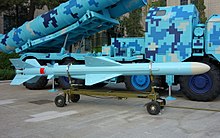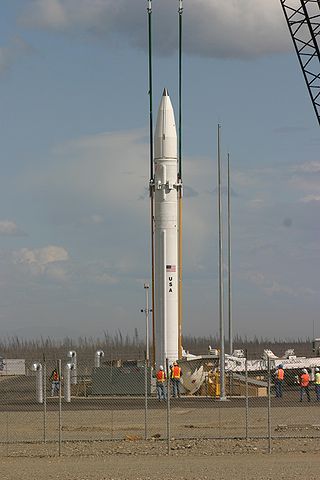
An anti-ballistic missile (ABM) is a surface-to-air missile designed to counter ballistic missiles. Ballistic missiles are used to deliver nuclear, chemical, biological, or conventional warheads in a ballistic flight trajectory. The term "anti-ballistic missile" is a generic term conveying a system designed to intercept and destroy any type of ballistic threat; however, it is commonly used for systems specifically designed to counter intercontinental ballistic missiles (ICBMs).

A cruise missile is a guided missile used against terrestrial or naval targets, that remains in the atmosphere and flies the major portion of its flight path at an approximately constant speed. Cruise missiles are designed to deliver a large warhead over long distances with high precision. Modern cruise missiles are capable of traveling at high subsonic, supersonic, or hypersonic speeds, are self-navigating, and are able to fly on a non-ballistic, extremely low-altitude trajectory.

A missile is an airborne ranged weapon capable of self-propelled flight aided usually by a propellant, jet engine or rocket motor.
The United States Armed Forces are the military forces of the United States. The armed forces consist of six service branches: the Army, Marine Corps, Navy, Air Force, Space Force, and Coast Guard. All six armed services are among the eight uniformed services of the United States.

Aerial warfare is the use of military aircraft and other flying machines in warfare. Aerial warfare includes bombers attacking enemy installations or a concentration of enemy troops or strategic targets; fighter aircraft battling for control of airspace; attack aircraft engaging in close air support against ground targets; naval aviation flying against sea and nearby land targets; gliders, helicopters and other aircraft to carry airborne forces such as paratroopers; aerial refueling tankers to extend operation time or range; and military transport aircraft to move cargo and personnel.
Sea denial is a military term for preventing an enemy from using the sea. It does not necessarily imply that the denier can itself use the sea. It is a parallel concept to sea control, which implies that that controlling force cannot be successfully attacked.

The United States Strategic Command (USSTRATCOM) is one of the eleven unified combatant commands in the United States Department of Defense. Headquartered at Offutt Air Force Base, Nebraska, USSTRATCOM is responsible for strategic nuclear deterrence, global strike, and operating the Defense Department's Global Information Grid. It also provides a host of capabilities to support the other combatant commands, including integrated missile defense; and global command, control, communications, computers, intelligence, surveillance, and reconnaissance (C4ISR). This command exists to give "national leadership a unified resource for greater understanding of specific threats around the world and the means to respond to those threats rapidly".

Nuclear weapons delivery is the technology and systems used to place a nuclear weapon at the position of detonation, on or near its target. Several methods have been developed to carry out this task.
The Islamic Revolutionary Guard Corps Aerospace Force or Islamic Revolutionary Guard Corps Air and Space Force is the strategic missile, air, and space force within the Islamic Revolutionary Guard Corps (IRGC) of Iran. It was renamed from the IRGC Air Force into the IRGC Aerospace Force in 2009.

A nuclear triad is a three-pronged military force structure of land-based intercontinental ballistic missiles (ICBMs), submarine-launched ballistic missiles (SLBMs), and strategic bombers with nuclear bombs and missiles. Countries build nuclear triads to eliminate an enemy's ability to destroy a nation's nuclear forces in a first-strike attack, which preserves their own ability to launch a second strike and therefore increases their nuclear deterrence.
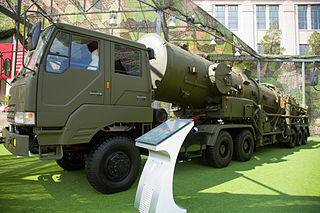
The Dong-Feng 21 (DF-21; NATO reporting name CSS-5 - Dong-Feng is a two-stage, solid-fuel rocket, single-warhead medium-range ballistic missile in the Dong Feng series developed by China Changfeng Mechanics and Electronics Technology Academy. Development started in the late 1960s and was completed around 1985–86, but it was not deployed until 1991. It was developed from the submarine-launched JL-1 missile, and is China's first solid-fuel land-based missile. The U.S. Department of Defense in 2008 estimated that China had 60-80 missiles and 60 launchers; approximately 10-11 missiles can be built annually.
The national security of China is the coordination of a variety of organizations, including law enforcement, military, paramilitary, governmental, and intelligence agencies that aim to ensure China's national security. China considers three factors in its national security: national sovereignty, security, and development interests.
An anti-ship ballistic missile (ASBM) is a military ballistic missile system designed to hit a warship at sea.
AirSea Battle is an integrated battle doctrine that forms a key component of the military strategy of the United States. The doctrine became official in February 2010, and was renamed to Joint Concept for Access and Maneuver in the Global Commons (JAM-GC) in 2015.

Missile defense systems are a type of missile defense intended to shield a country against incoming missiles, such as intercontinental ballistic missiles (ICBMs) or other ballistic missiles. The United States, Russia, India, France, Israel, Italy, United Kingdom, China and Iran have all developed missile defense systems.
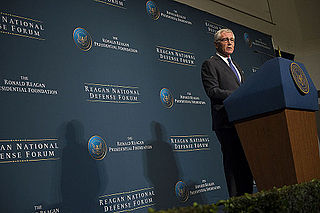
An offset is some means of asymmetrically compensating for a disadvantage, particularly in a military competition. Rather than match an opponent in an unfavorable competition, changing the competition to more favorable footing enables the application of strengths to a problem that is otherwise either unwinnable or winnable only at unacceptable cost. An offset strategy consequently seeks to deliberately change an unattractive competition to one more advantageous for the implementer. In this way, an offset strategy is a type of competitive strategy that seeks to maintain advantage over potential adversaries over long periods of time while preserving peace where possible.
Iran's anti-access/area denial (A2/AD) strategy in the Strait of Hormuz mixes advanced technology with guerilla tactics to deny, deter or delay foreign forces access and maritime freedom of maneuver. The regular attempt by adversaries to deny one another freedom of movement on the battlefield can be observed throughout history. What makes anti-access/area-denial nowadays different from the past is the rapid improvement in military and communication technology in recent decades and new ways of implementing these strategies that such technology creates. Most scholarly attention seems to have gone to Chinese anti-access/area denial (A2/AD) capabilities, most likely because modern military technology is required to uphold A2/AD, it is almost always exclusively practiced by advanced regional powers like China. The A2/AD portfolio leverages diplomatic, information, military, and economic (DIME) activities. The focus of the Iranian A2/AD threat in the Strait of Hormuz is limited to the military dimension.
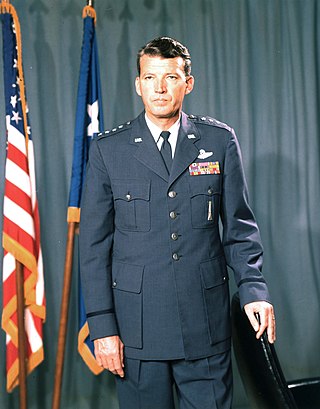
While the United States Space Force gained its independence on 20 December 2019, the history of the United States Space Force can be traced back to the beginnings of the military space program following the conclusion of the Second World War in 1945. Early military space development was begun within the United States Army Air Forces by General Henry H. Arnold, who identified space as a crucial military arena decades before the first spaceflight. Gaining its independence from the Army on 18 September 1947, the United States Air Force began development of military space and ballistic missile programs, while also competing with the United States Army and United States Navy for the space mission.

Agni-P or Agni-Prime is a medium-range ballistic missile being developed by India's Defence Research and Development Organisation (DRDO) as a successor for Agni-I and Agni-II missiles in the operational service of Strategic Forces Command with significant upgrades in the form of composite motor casing, maneuverable reentry vehicle (MaRV) along with improved propellants, navigation and guidance systems.

Rapid Dragon is a palletized and disposable weapons module which is airdropped in order to deploy flying munitions, typically cruise missiles, from unmodified cargo planes. Developed by the United States Air Force and Lockheed, the airdrop-rigged pallets, called "deployment boxes," provide a low cost method allowing unmodified cargo planes, such as C-130 or C-17 aircraft, to be temporarily repurposed as standoff bombers capable of mass launching any variant of long or short range AGM-158 JASSM cruise missiles against land or naval targets.

